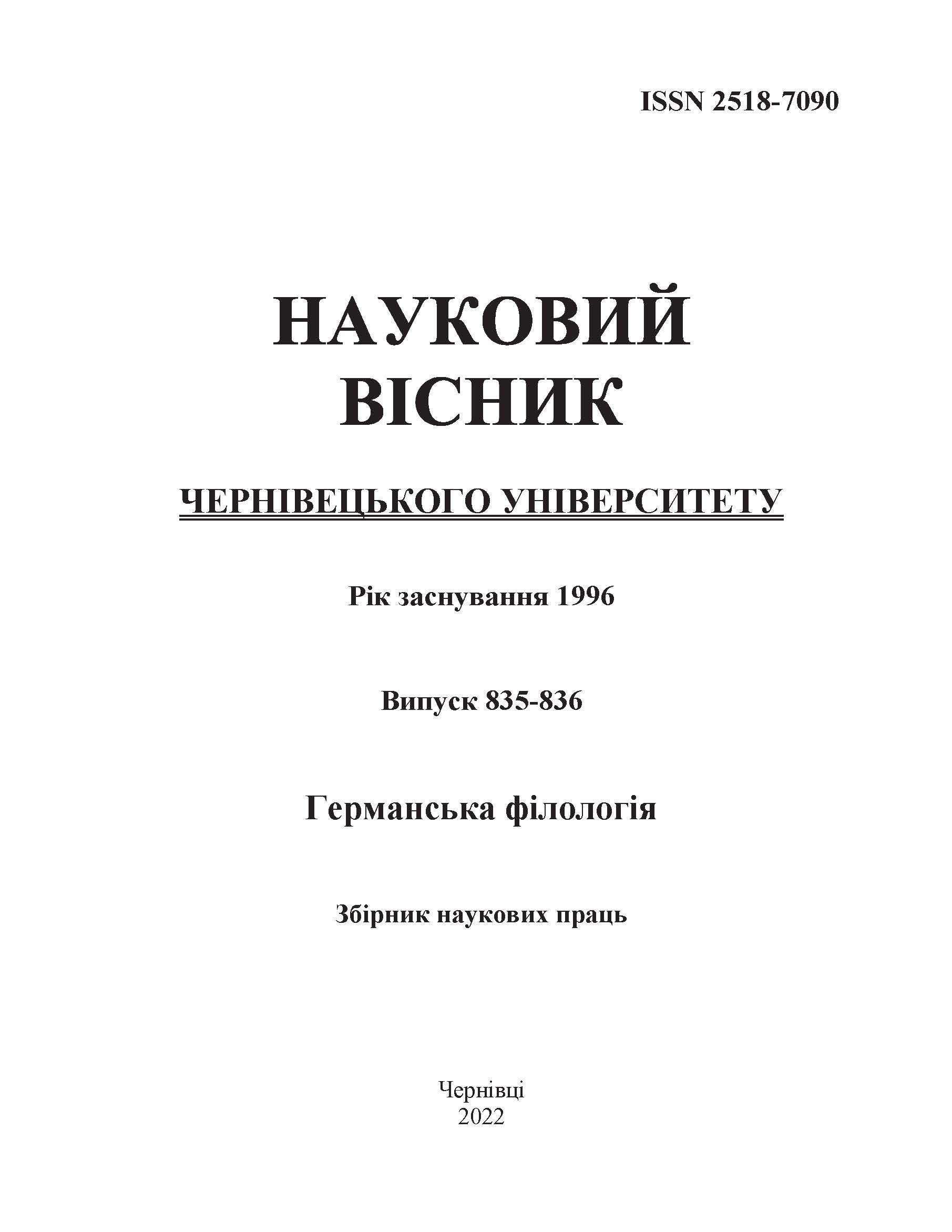METAPHORICAL REPRESENTATION OF UKRAINE IN MODERN ENGLISH MASS MEDIA DISCOURSE
DOI:
https://doi.org/10.31861/gph2022.835-836.83-93Keywords:
conceptual metaphor, mass media discourse, image metaphor, ontological metaphor, structural metaphor, orientational metaphorAbstract
The article describes the metaphorical representation of the image of Ukraine in the mass media discourse. A conceptual metaphor is the main form of expression of the metaphorical embodiment of the image of Ukraine in the English-language media. Particular attention is paid to the definition of conceptual metaphor and its classification. The essence of conceptual metaphors is to represent complex and abstract areas of human experience through simpler and more specific ones. According to G. Lakoff and M. Johnson, conceptual metaphors are divided into traditional and image metaphors. Traditional metaphors, in turn, are divided into ontological, orientational and structural ones. Traditional metaphors are commonly used in everyday language and culture, and are perceived as common ways of conceptualizing reality. Image metaphors reproduce an individual worldview of a subject of discourse and are context-dependent. Conceptual metaphor is a means of creating and presenting the assessment of the image of Ukraine in foreign English-language newspaper articles based on its similarity to things in the real world. The analysis of metaphorical statements taken from the articles of modern English-language online mass media, namely The Atlantic, The Boston Globe, London Free Press, The L.A. Times, MSN UK, The Washington Post, Tribune Online, The Bangor Daily News, StarTribune, New York Post, The Daily Item, Wales Online, The New York Times, Fox News for February−March 2022, showed that the image of Ukraine is presented in the English-language media discourse through the following metaphors: UKRAINE IS A LIVING CREATURE/ORGANISM, UKRAINE IS AN EXPLORER, UKRAINE IS AN INSPIRER, UKRAINE IS A VICTIM, UKRAINE IS A WARRIOR, UKRAINE IS A HUNTER, UKRAINE IS A COMPETITOR, UKRAINE IS A LOCATION, UKRAINE IS A POLLUTED PLACE, UKRAINE IS A SUBSTANCE, UKRAINE IS AN OBJECT OF EXTERMINATION, UKRAINE IS AN EMPLOYER (related to ontological), UKRAINE IS A TRAVELLER, UKRAINE IS A MOVING FORCE, UKRAINE IS A SPREADER (orientational metaphors), UKRAINE IS AN INTEGRAL PART, UKRAINE IS AN OBJECT, TO WHICH THE FORM CAN BE GIVEN (structural metaphor), UKRAINE IS A PROTECTIVE AGENT, UKRAINE IS A THREAT, UKRAINE IS A CHOICE, UKRAINE IS A KILLING FIELD, UKRAINE IS A TESTING GROUND, UKRAINE IS AN OBJECT OF SACRIFICE, UKRAINE IS A POWERHOUSE, UKRAINE IS HOME, UKRAINE IS LIFE, UKRAINE IS A TARGET, UKRAINE IS A PAWN, UKRAINE
IS A STEP, UKRAINE IS A GATEWAY (image metaphors).
The identification of the above-mentioned conceptual metaphors outlined the peculiarities of the perception of Ukraine by the English-speaking communities and allowed us to assess the events taking place in the country.





